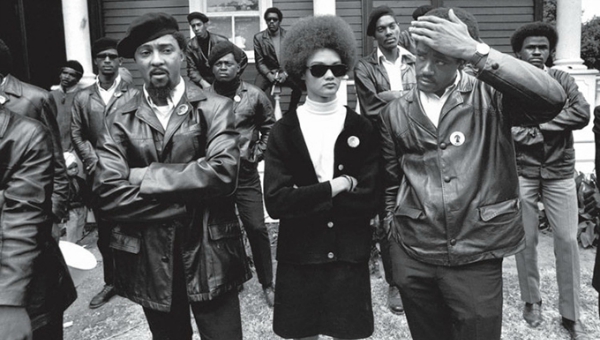
The Black Panther Party’s rise and fall took place within a relatively short period, between 1966 and 1973, though it limped on through the 1970s and was only officially dissolved in 1982. Often demonised by its enemies during that time, the Party’s influential iconography — the beret, black leather jacket, sunglasses, raised-fist salute — remains as powerful as ever. Without denying the importance of these visual cues, THE BLACK PANTHERS: VANGUARD OF THE REVOLUTION aims to set the record straight and remind viewers that this organisation represented more than just a kind of stylish menace.
Bringing together interviews, historical footage, photographs and a dynamic, evocative score, the film’s director Stanley Nelson has expertly marshalled his material to craft a coherent and occasionally uplifting story out of what was clearly a ragged, mostly downbeat reality. The film builds up a general picture both of the Panthers’ growing national popularity (literally pointing out its celebrity supporters like Marlon Brando and Jane Fonda) and of its day-to-day difficulties, while also focusing on key moments in the history of the party, from its beginnings as an essentially defensive organisation in Oakland, California in 1966, to the destructive, long-distance squabbling between Huey Newton and Eldridge Cleaver in the early 1970s.
There is a sense that some of the ambiguities have been smoothed out.
There seems to be no question that the Black Panthers were unfairly vilified by the mainstream media and harassed by the political establishment, and it is hard to miss, or disagree with, the film’s burning sense of injustice. However, Nelson perhaps goes too far in the other direction by downplaying some of the Party’s more questionable activities, such as killings attributed to senior Black Panther members, street fights with rival organisations and the lethal shoot-out between the Panthers and the Chicago police which took place in late 1969, a few weeks before the horrifying raid on the apartment of local Black Panther leader Fred Hampton. Where the film goes into some detail about Black Panther violence, as with the four-hour gun battle with police at the Panthers’ Southern California HQ in LA in December 1969 — the first time that the police’s newly formed SWAT unit was put into action — the impression given is of justified resistance against overwhelming odds.
Nelson’s editorial skills also provide the film with a well-contrasted set of protagonists: the Panthers’ founders Huey P. Newton and Bobby Seale, the first visionary but hot-headed, the second more even-tempered but no less driven; Eldridge Cleaver, an eloquent firebrand whose enforced exile gave the movement greater international visibility while sowing the seeds of the rancorous split that would destroy it; and Fred Hampton, whose combination of political savvy, revolutionary fervour and oratorical flair put him directly in the sights of a jittery FBI. As with the narrative, there is a sense that some of the ambiguities have been smoothed out. Cleaver’s lofty political ambitions and overt Marxist rhetoric are contrasted with Newton and Seale’s apparently more domestic agenda, including the ‘Free Breakfast for Children’ programs. But Newton and Seale were not exactly politically lightweights either. The film also overplays the idea that Hampton fits the bill of the ‘black messiah’ dreaded by the FBI.
After his inauguration, President Nixon basically told Hoover to take the gloves off.
The FBI’s frog-faced director J. Edgar Hoover, implacable and unscrupulous, readily emerges as the villain of the piece: we see damning extracts from FBI memos showing the counter-intelligence operation against the Panthers (COINTELPRO), which encouraged the use of infiltration, propaganda, provocations and frame-ups. The lone FBI operative interviewed for the film confirms the reality of this, incidentally suggesting that the police were manipulated into doing much of the FBI’s dirty work for them. Hoover is abetted in his villainy by an even more potent symbol of government malfeasance: Richard Nixon. After his inauguration as President in 1969, Nixon basically told Hoover to take the gloves off, and Hoover — who at one point in the film asserts his belief that justice is subservient to law and order — was only too happy to oblige. (To the Panthers, of course, it would have seemed as if the gloves were never on.)
One of the film’s most useful services is to tell so much of the story from the point of view of the Panthers themselves. We get to see surviving members in the present day intercut with their younger selves in footage from the 1960s and 1970s. It is significant that the interviewees include a number of highly eloquent women, including Erika Huggins and the iconic Kathleen Cleaver (wife of Eldridge). Although all the Panther leaders were male and the party’s culture, at least at first, unmistakably macho, women made a crucial contribution to the party. As one of the (white) interviewees points out, in its commitment to the equality of the sexes and its anti-capitalist sentiments, the Black Panther Party was genuinely regarded as the ‘vanguard of the revolution’.
httpvh://www.youtube.com/watch?v=F56O3kZ9qr0

